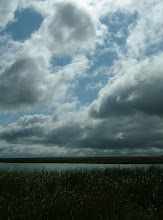
What, then, is prairie? Prairie is an ecosystem. It is plants and soil and animals and fire working together.
The plants are grasses. Just as trees define a woodland and cacti define a desert, grasses define a prairie. There are non-grass plants too, and these are the ones whose showy flowers we notice. Those of us in the ‘industry’ have a code word for those flowering prairie plants: Forbs. The grasses and the forbs work together to build soil and make the best use of rainwater. About half of the root mass of the grasses die underground and are regrown each year, adding organic matter to the soil. The dense but fine fibrous roots of the grasses are as deep as the plant is tall, to form a sponge under the ground that absorbs and slowly holds rainwater, preventing erosion, and the deeper thicker sparser roots of the forbs are up to ten times as deep as the plant is tall and allow the unused water to percolate through clay subsoils into deeper layers, replenishing aquifers eventually. The tallgrass prairie covered the middle of the country in a band from Canada to Texas, with midgrass prairie west of that where there is less rainfall each year, and shortgrass prairie farther west of that in the rainshadow of the Rockies. But in all of them, grasses were the defining plants, the functioning plants that stretched horizon to horizon and played large against the big of the blue sky above.
The plants are grasses. Just as trees define a woodland and cacti define a desert, grasses define a prairie. There are non-grass plants too, and these are the ones whose showy flowers we notice. Those of us in the ‘industry’ have a code word for those flowering prairie plants: Forbs. The grasses and the forbs work together to build soil and make the best use of rainwater. About half of the root mass of the grasses die underground and are regrown each year, adding organic matter to the soil. The dense but fine fibrous roots of the grasses are as deep as the plant is tall, to form a sponge under the ground that absorbs and slowly holds rainwater, preventing erosion, and the deeper thicker sparser roots of the forbs are up to ten times as deep as the plant is tall and allow the unused water to percolate through clay subsoils into deeper layers, replenishing aquifers eventually. The tallgrass prairie covered the middle of the country in a band from Canada to Texas, with midgrass prairie west of that where there is less rainfall each year, and shortgrass prairie farther west of that in the rainshadow of the Rockies. But in all of them, grasses were the defining plants, the functioning plants that stretched horizon to horizon and played large against the big of the blue sky above.

1 comment:
i know who you are talking about and that isn't nice!!! some people who do not have an adequate layer of insulating body fat can tend to get grumpy in winter, and due to 75% off candy day, i am keeping mine adequate!!
Post a Comment